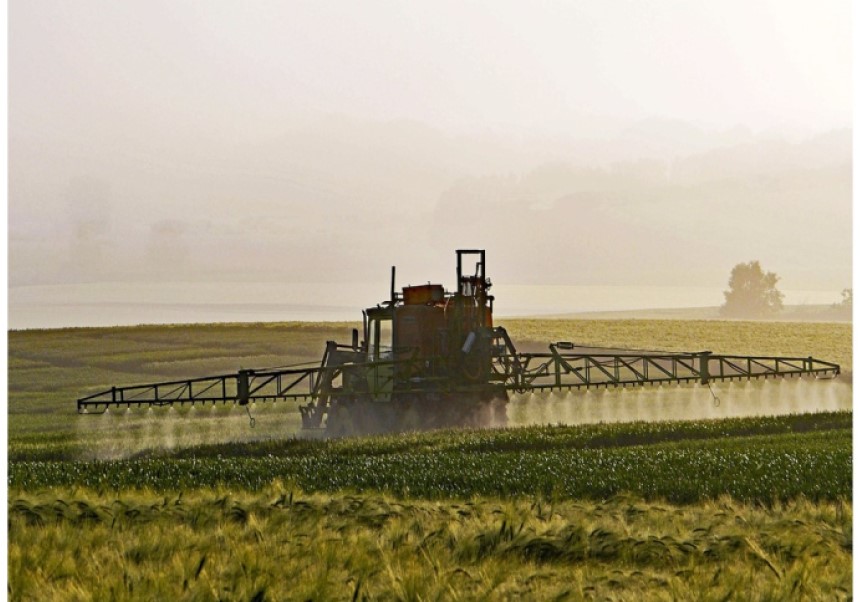
The study, the most comprehensive conducted so far, has revealed the widespread presence of pesticides, some banned since 2009, in both National Parks.
The compounds detected have a high environmental impact and a high risk for aquatic ecosystems.
Doñana National Park has been suffering from serious drought problems for more than a decade. However, not only the quantity of water is worrying, but also its quality. This has been reflected in a study carried out by researchers from the Consejo Superior de Investigaciones Científicas (CSIC), under the Ministry of Science, Innovation and Universities, which has detected the presence of phytosanitary products in the National Parks of Doñana and Tablas de Daimiel.
This research, led by the Instituto de Diagnóstico Ambiental y Estudios del Agua (IDAEA-CSIC), with the participation of the Estación Biológica de Doñana (EBD-CSIC), the Museo Nacional de Ciencias Naturales (MNCN-CSIC) and the Centro de Investigaciones sobre Desertificación (CIDE, CSIC-UV-GVA), aimed to evaluate the environmental impact of agricultural activities in the surroundings of these protected areas.
The work, published in the journal Chemosphere, is the most comprehensive study to date on pesticides in Spanish Protected Areas, including the analysis of more than a hundred hydrophilic and hydrophobic pesticides in water and sediment samples. A risk assessment was also conducted to highlight potential hazards to aquatic organisms from pesticide loading.
“Despite the fact that the regulations of the National Parks are the most legally protected, pesticides from nearby agricultural activities are affecting the living beings that inhabit them. In fact, a previous study by our group already indicated that the accumulation of pesticides in some species of birds in Doñana National Park reduced their reproductive capacity,” says IDAEA-CSIC researcher Ethel Eljarrat.
Impact of agricultural activity
In recent years, problems related to intensive agriculture in protected areas have been found to be potentially harmful to wildlife. Another previous study by the same research group had already warned about the presence of some pesticides such as bifenthrin, a pyrethroid insecticide banned for agricultural use, in samples of bird eggs collected in Doñana. These findings motivated the continuation of the study to evaluate the level of contamination in water and sediments and to identify possible illegal agricultural practices in the environment of these protected areas.
The results reveal the widespread presence of pesticides in Doñana and Tablas de Daimiel, although in the first case the levels are higher. In both water and sediment samples, several pesticides banned by the European Union since 2009 for agricultural use have been found. Although the presence of banned pesticides in sediments may be due to the persistence of the compounds in the environment, the detection of up to seventeen banned pesticides (such as chlorpyrifos, terbutryn or diazinon) in water samples would indicate recent use.
It is also common to find other products that, although they were suitable in 2021 when the sampling was carried out, cannot be used from 2022, such as oxadiazon or cyfluthrin, among others. “It is important to carry out more studies like this one that will allow us to verify whether the new compounds introduced in the 2022 regulations are no longer used and, if not, to act accordingly,” Eljarrat stresses.
“In Doñana and in the Tablas de Daimiel, the influence of phytosanitary products used in the surrounding crops in the contamination of these is observed. This contamination in many cases shows that it can be dangerous for aquatic fauna and, above all, an important capacity to affect biodiversity”, summarizes Yolanda Picó, co-author of the study and researcher at CIDE.
Another interesting fact is the detection of higher levels of contamination at some points whose flow, at the time of sampling, was lower. “This shows that water scarcity causes an increase in the concentration of contamination,” says Miguel Angel Bravo, curator of the Doñana natural area and co-author of the study.
Phytosanitary risk assessment
The study also includes a risk assessment of the presence of pesticides to aquatic organisms, so the research provides valuable insight into the impact of agricultural activities in two protected areas. “Our results include the assessment of potential risks of pesticide contamination in waters, but also in sediments, and suggest moderate to high potential risks at all sampling points in both National Parks”, indicates Ethel Eljarrat.
This study is part of the project Impact of agricultural activities on the fauna of national parks (APAN), funded in 2017 by the then Ministry of Agriculture and Fisheries, Food and Environment in the framework of the Call for Research Grants in matters related to the National Parks Network.
References:
A. Peris, Y. Soriano, Y. Picó, M.A. Bravo, G. Blanco, E. Eljarrat. Pesticides in water and sediments from natural protected areas of Spain and their associated ecological risk. Chemosphere. DOI: 10.1016/j.chemosphere.2024.142628
A. Peris, R. Baos, A. Martínez, F. Sergio, F. Hiraldo, E. Eljarrat. Pesticide contamination of bird species from Doñana National park (southwestern Spain): Temporal trends (1999–2021) and reproductive impacts. Environmental Pollution. DOI: 10.1016/j.envpol.2023.121240
CIDE Communication









